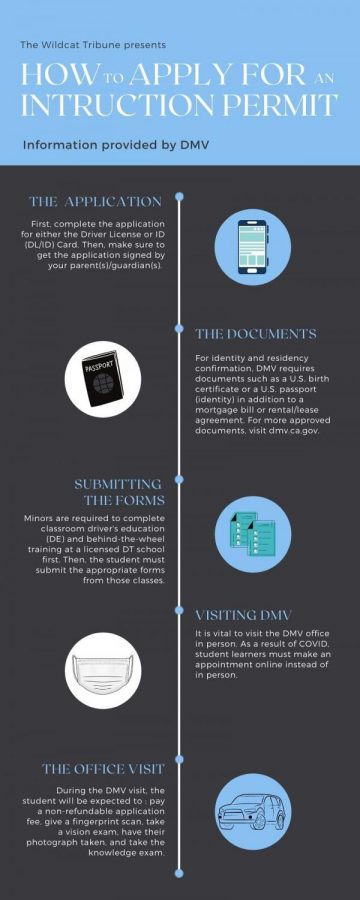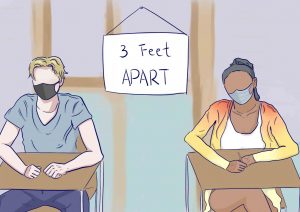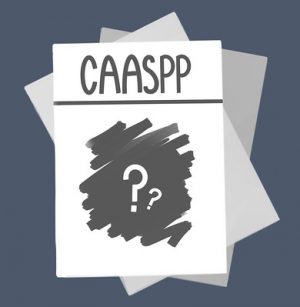A guide to driver’s license testing during COVID-19 lockdown
DMV’s application process for a driver’s license has been adapted to meet the needs which came with the pandemic.
May 24, 2021
Driver’s licenses are issued by the Department of Motor Vehicles (DMV) after a person has been tested to meet the requirements for safe driving. Since the tests are all in-person, the process has recently been greatly modified to prevent the spread of coronavirus.
In this guide, we have combined official information found on the DMV website as well as anecdotes from three Dougherty Valley seniors—Allie Castro, Zachary Santos and Kyle Del Rosario—who took their permit tests pre-COVID and their behind-the-wheel driving tests during the pandemic lockdown.
Original process
Normally, to apply for an instruction permit as a minor, one must submit a certificate of completion of driver education or a certificate of enrollment in an integrated [classroom] driver education and driver training program (DE/DT certificates) as well as two residency documents (insurance, home utility bills, etc.).
The testing process for a driver’s license typically includes two parts—a written test and a behind-the-wheels test—regardless of age. For minors, passing the written test will result in getting the instruction permit, which allows you to practice under guidance from your legal guardians, or other licensed individuals over the age of 25, as well as driving coaches.
Six months after receiving the permit, and after at least six hours of professional instruction (2 for adults) and 50 hours of practice (with 10 after dark), students may have their permits signed off by their instructor and guardian to make an appointment for the behind-the-wheel driving test. The driving test is typically around 10 minutes. DMV facility members will instruct student drivers as they drive under different circumstances in order to assess their knowledge to operate the vehicle and follow traffic laws.
Changes due to COVID
Prior to the pandemic, permit tests were available through a walk-in process. At any time during office hours, students could drop in at their local DMV with the proper documents, register, take the test and return with an authorized permit. In response to the pandemic, however, tests are by appointment only. All necessary documents and fees must be submitted prior to the scheduled appointment.
For those who already have a learner’s permit but are unable to schedule a recent behind-the-wheels appointment, an extension is given.
“Noncommercial driver’s license permits expiring between March 1, 2020 – May 31, 2021 are extended six months or to a date 24 months from the date of application, whichever is earlier,” says the DMV.
In addition, the testing process was modified in order to hold all previously canceled tests. This includes extending office hours, opening on Saturdays and shortening certain routes in order to accommodate for the increase in testers and extensive safety procedures. Despite the change in length, test routes will remain in public areas near DMV offices, and will be long enough to test one’s ability to drive under numerous different conditions. Road conditions include residential areas, main streets, and more, while skills tested include speeding, yielding, traffic checks, parking, pulling over, backing up, switching lanes, merging, turning at intersections, turning with and without stop signs, and following all other signals provided.
Disease prevention
Upon arrival, the DMV enforces a series of disease prevention procedures. “When I got to the DMV, I had to check in at a table outside of the building in the parking lot and they gave me a number. Everyone had to wait outside until their number got called in. Before I entered the building, they took my temperature and then the lines inside were all socially distanced with only a few DMV workers at the cubicles,” said Castro.
During the testing process, additional safety measures were enforced. “I vividly remember when my driving examiner came into my car, they had to put plastic wrapping all over the car seat and floor to ensure safety while taking the test,” added Santos.
What to expect
Besides the safety procedures and shortened test routes, the process remains the same. However, it is worth noting that delays in the appointment schedules have been a source of concern from test takers. Both Castro and Del Rosario experienced hour-long delays.
“Some advice I would give is to drive as much as you can while you have your permit, so you are comfortable on the road when you take the test. During the test, remember to always be aware of your surroundings, and make sure the instructor knows you are. You can do this by checking your mirrors often, and make it slightly obvious that you are by turning your head a bit instead of just using your eyes,” says Del Rosario.






